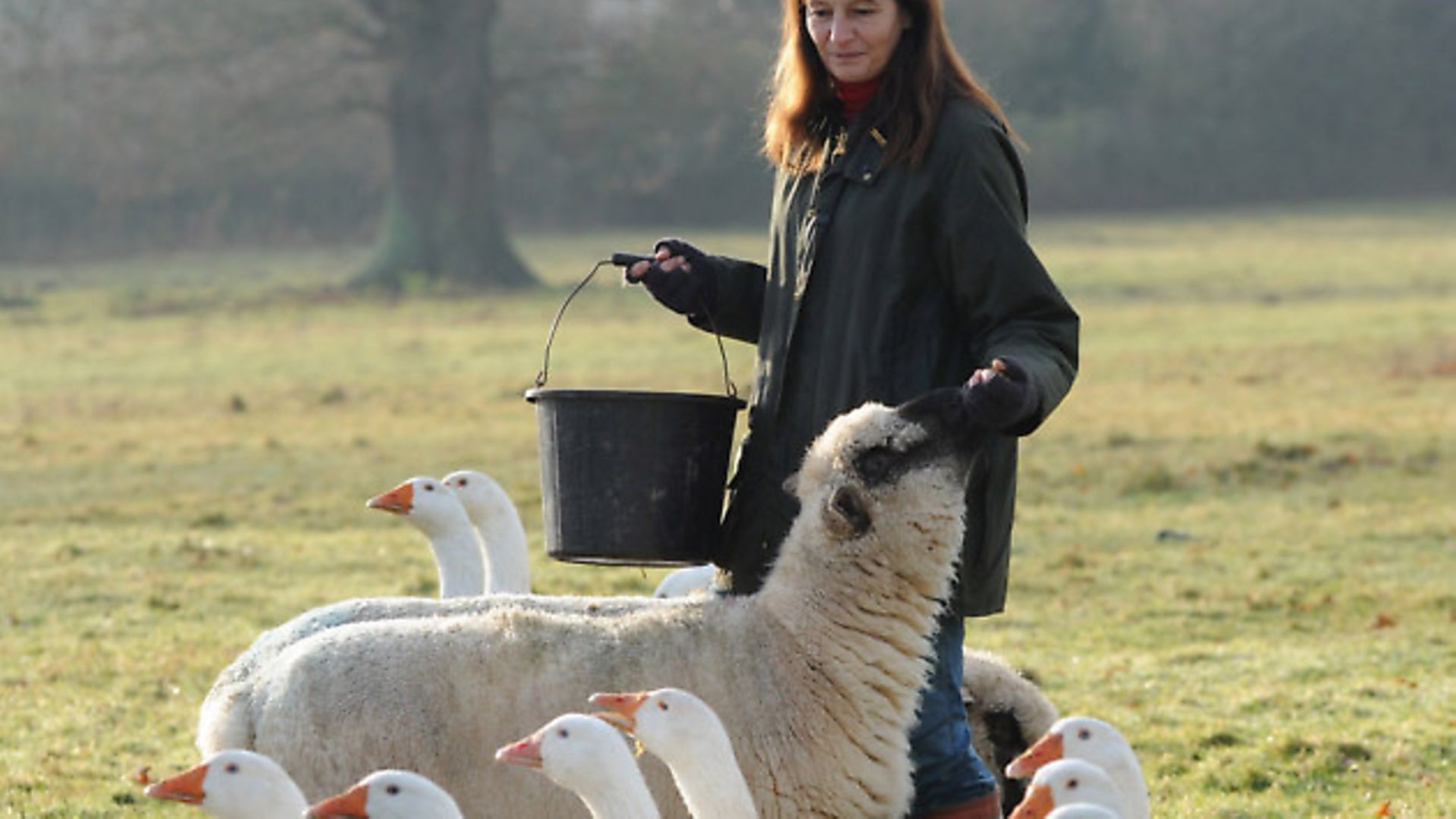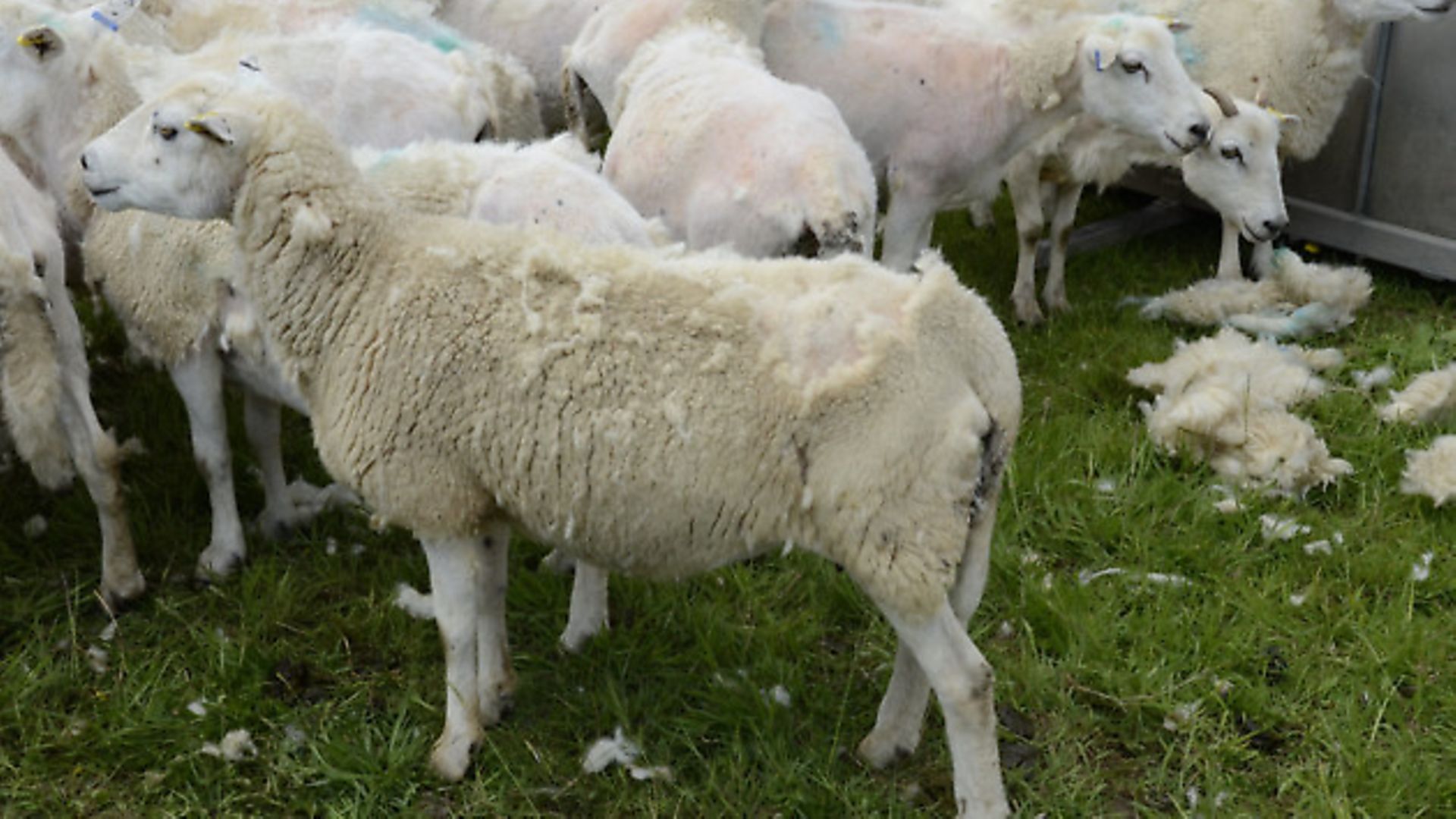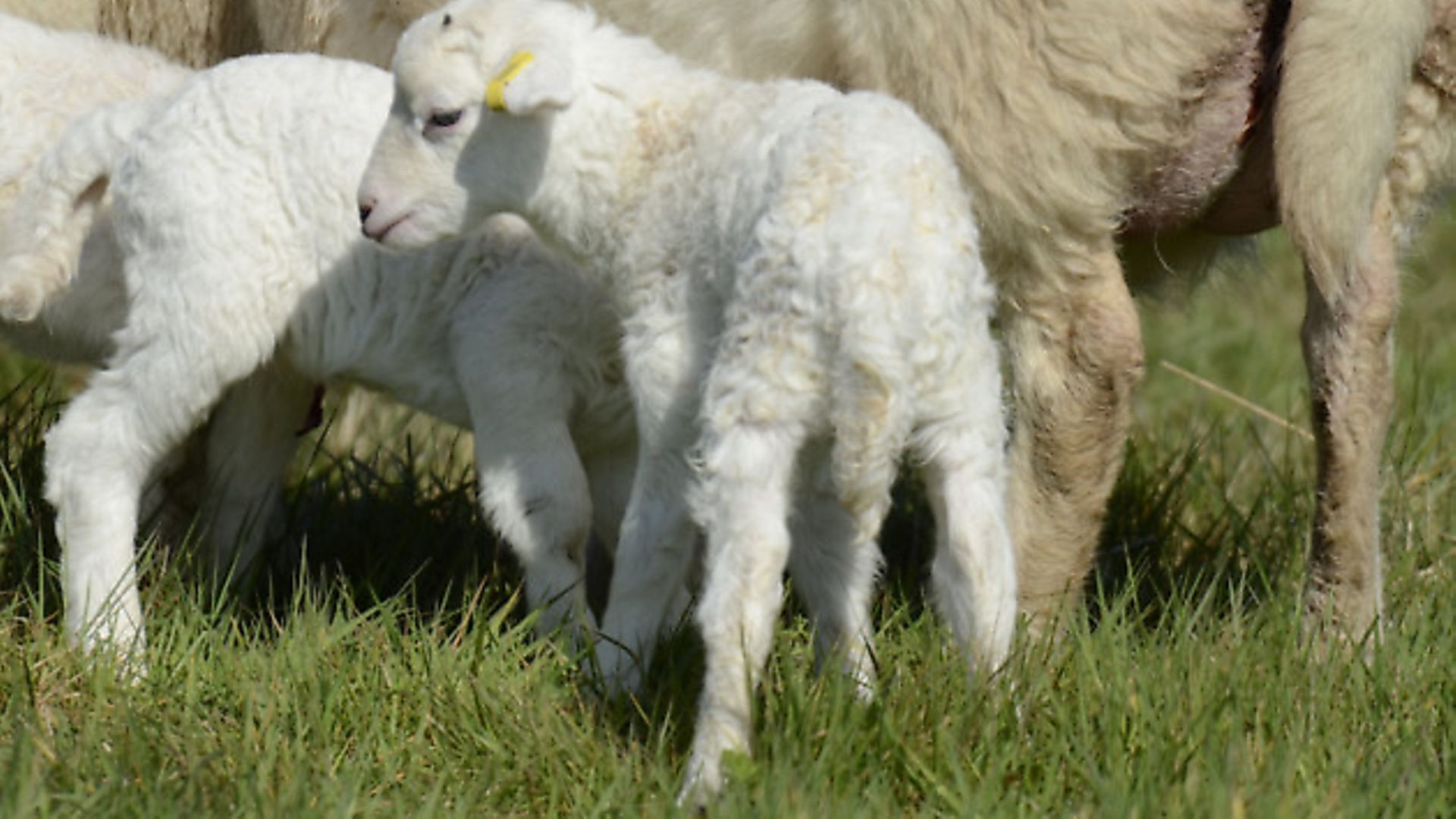What is the ideal sheep for the smallholder? Sally Morgan, who keeps sheep at her farm in Somerset, offers a suggestion

For many years I have owned a small flock of traditional breeds. I started with Southdowns and then moved to Dorset Downs, attracted by their appearance, and the fact that they were a rare breed. However, traditional sheep breeds are not necessarily the best option for a busy smallholder who is combining a full time job with managing a holding.
As the years have gone by, my flock has declined in number and is currently made up of mostly elderly ewes whose only role is to keep the grass down for my geese. With several fields of grass going spare, I arranged a local sheep farmer to graze the land. The farmer, Tim White, bought 80-head of his in-lamb ewes along in February. They were motley bunch, of various crosses based on Wiltshire horn and Lleyn. Most of the ewes were carrying twins or triplets, so according to my ‘book’, I would have been feeding them hay and concentrates, following a pattern of increasing concentrates each week as their due date approached.
But not these ewes; they were put out on our fields and they didn’t receive anything by way of supplement, even those carrying triplets. The ewes lambed with ease outside over the three-week period in April. I don’t think any of the ewes required any form of intervention and most delivered good-sized twins and triplets, with Tim doing regular inspections, catching up all newborn lambs for weighing and tagging.
This was a pasture-fed flock with all the ewes and lambs raised on grass. To ensure a fresh supply of grass through the year, the flock were grazed tightly and moved every 10 to 14 days.
This regular movement meant that the grass could recover, poaching around water troughs and under hedgerows was avoided, and the sheep were always eating new growth grass. The grazing levels are such that there is enough grass for the ewes to take them through the winter months and they will not require any hay.
All of Tim’s sheep are shedding sheep, which means that they do not have to be sheared. Their fleece comes out naturally over a period of two months. I was prepared for the fields covered in handfuls of fleece, but the time at which the sheep are shedding coincides with nesting, and much of the fleece was snapped up by nest-building birds.
The lambs were weaned at 16 weeks and moved off the holding in August to be finished for market. At the time of writing, the ewes are regaining their body condition and will be ready for tupping in November.

Tim is one of the new breed of sheep farmers, more interested in the productivity and ease of care than their looks. He selects his breeding stock with great care, avoiding ewes that have had lambing issues, have scoured, had foot problems or ‘been difficult’ in any way, a real zero tolerance approach which has paid dividends.
Over several generations, he has seen the flock improve. The sheep have electronic tags, and they are regularly weighed and faecal samples taken to check worm load and his breeding records are meticulous.
Benefits of the easy care sheep
I was sceptical to start, but seeing the ease with which these animals have been managed has convinced me of the benefits of the easy care sheep for the smallholder, which are:
• The outdoor lambing means no long nights in the lambing barn followed by a day at work – these girls cope on their own.
• Their shedding nature avoids the need to get a shearer, which is becoming increasingly difficult to find in some areas and quite expensive, and there is none of the hassle of getting the sheep in to keep them dry, or rushing home from work to find it’s pouring with rain and the shearer has cancelled.

• These sheep seem pretty resistant to fly strike too, with only one case amongst the lambs and none in the adults, saving on costly fly prevention sprays.
• The sheep have been selected for tolerance to worms, so they are not wormed unless the faecal testing shows it to be necessary, again a saving on buying expensive wormers in litre bottles when you only have a small flock.
• Feet too seem to be good and there are few lame sheep
• The average lambing percentage of 200% means good returns.
Estimated breeding values
For generations, decisions regarding the selection of breeding stock, particularly terminal sires, have been based on visual appearance; the conformation, the quality or weight of fleece, the number and size of lambs etc. This meant that ‘invisible’ genetic factors such as ease of lambing, parasite and disease resistance were overlooked. But that is changing. Now scientists have developed a method that provides an estimated breeding value or EBV of an animal for a particular characteristic based on its genetic history and performance data.
An EBV is a prediction of the breeding potential of an animal for a specific characteristic, such as number of lambs, weight at 8 and 21 weeks, depth of muscle and fat in the carcass. For example, a ram with a EBV of +8.5 for scan weight (21 weeks) means it has the potential to be 8.5 kg heavier at 21 weeks compared with one of an EBV of 0. The EBVs combine to give a breeding index or overall ranking which can be used for comparative purposes. A ram passes on half its genes to its offspring, so the values are halved when estimating the genetic value of the lambs.
In the UK, EBVs are recorded through the Signet Recording Scheme and many breeds are taking part such as Southdowns, Dorset, and Shropshire. At ram sales, breeders who record their performance data, indicate the EBVs of their animals on the sale card.
Obviously the environment plays a big role as does the management of the flock, but a genetically superior animal will perform better than other members of the flock, regardless of the management.
The latest development in recording performance is genomic selection, where advances in DNA analysis mean that the sheep’s genes have been mapped and genes for specific characteristics identified. This knowledge will allow breeders to select for specific traits. Genomic selection is most advanced in Australia and New Zealand where breeds such as NZ Romney has been genotyped and improved, with breeding stock in demand around the world.
Improving your stock
Individual smallholders can do much to improve their own flock. One way to make improvements is to select a ram that offers good performance and disease resistance in its offspring. Tim’s rams have been breed and Signet recorded over a number of generations, so choosing them as a terminal sire means the lambs will grow quickly, reach a good 21 week weight and probably finish a few weeks ahead of more traditional breeds, as well as inherit some of the disease resistance of the ram.
If you have an existing flock, don’t just breed from all your ewes – be selective. Avoid breeding from ewes that have caused you problems, for example, had a difficult lambing, needed regular foot treatment, or are always scouring or getting fly strike. By being more selective, you should see an improvement in the quality of your breeding ewes and lambs within a few years. And if you do have problems with some of your flock, it may be better in the long run to cull them and start afresh with quality breeding stock.
* Sally Morgan runs courses for smallholders at her farm in Somerset. See: www.empirefarm.co.uk
Tim White is at www.provensheddingsheep.co.uk
Image(s) provided by:
Archant







